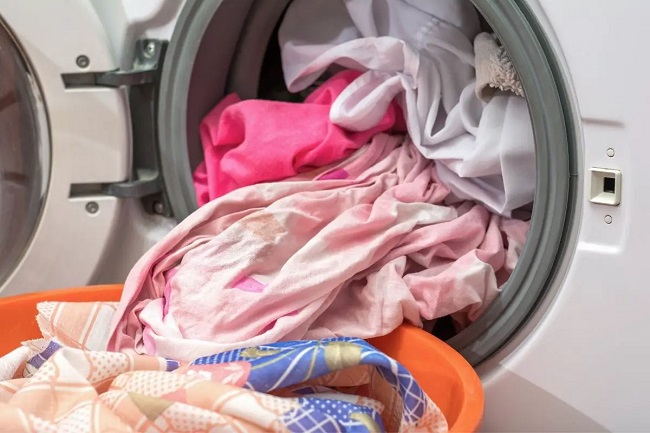Cleaning and laundry are two activities in which we could all use a little extra time. Instinctive thrift compels even the busiest mother to toss whites and colours into the dryer together.
However, doing so may result in drawbacks that are much more severe than any advantages. It might be a terrible experience to dry whites and colours at the same time.
Still-wet colours might bleed into whites, ruining their pristine appearance. Additionally, the dryer’s heat might help the dye permanently embed itself into the white fabric. To be safe, don’t throw in any whites with your coloured garments if you aren’t positive about their colorfastness.

Avoid doing so at all costs if the clothing is either brand new or dyed a bright shade of red. Instead, follow the care instructions provided by the manufacturer for drying each item separately.
We’ll go into greater detail on drying whites and colours together below, as well as whether or not you should be washing whites and colours separately and how to do so correctly if you do.
Contents
Let’s Start With the Most Important Question First: is it Safe to Wash Whites with other Colours?
Undoubtedly, one must first become wet. And before we even get to the topic of drying whites and colours together, we need to address the issue of whether or not we can wash them together.
Should we even try?
In a perfect world, I would tell you to not do it at all. Never mix colours while washing whites. Since whites are the most susceptible to discoloration during colour bleeding, this is an important consideration.
The stain can be difficult to remove, if not impossible, depending on how long the dyes were allowed to set.
However, let’s take a look at things from a different angle. practicality in mind. Synthetic fibres like nylon and polyester, which hold onto colours better than natural fibres like cotton and leather, are used to make high-quality clothing nowadays, so bleeding is almost unheard of after the first wash. As a result, it’s possible that washing them with whites won’t cause any issues.
Color-fastness should be checked with a white swab. Soak it in water and repeatedly dab at a stealthy spot on the shirt. Then, you can test the swab to determine if the colour has transferred.
(Be sure to inspect each and every one of the many hues in patterned garments.)
You won’t see any colour transfer to the swab, even after the first wash, even high-quality garments coloured with high-quality dyes. That’s a pretty clear indicator that it’s OK to wash the item with your whites.
Fabrics that don’t contain care instructions on the seam, such as “colour may come off,” “wash in cold water only,” or “turn inside out and launder,” can be trusted to have been dyed with high-quality dye.
What should You do if You Want to Mix Colours with Drying Whites?
It has been suggested that the best practise is to not dry whites with colours due to the risk of colour bleeding. However, you shouldn’t have any trouble doing so if you stick to high-quality materials, as the fibres in these won’t bleed colour.
The caution about wearing red remains in effect. You should keep them away from any light-colored clothing.
Can Different Coloured Garments be Washed Together?
While it may be more convenient, you should always wash like colours separately. This is especially important if you have any items that may bleed, such as brand new blue jeans.
Use blue water on blue clothing, and red water on red clothing. But if the colours won’t run into each other, go ahead and wash them together.
You shouldn’t throw Your Garments in with the Towel Load.
This may seem odd, but it’s actually something that many of us have committed to doing. I’ll explain what happens to your clothing now.
Since towels are already quite hefty when dry, adding water makes them considerably more of a burden, causing your clothing to be squished and weakened. After some time, they wear out and cause your clothing to rip.
One reason your garments can smell again after wearing them for a few hours after washing is that towels, which are less sanitary than other clothes, can transfer this odour onto them when you wash them together in the washer.
Since towels are substantial, they need rigorous washing conditions like hot water and more agitation. Since they’re the dirtiest items, the settings will need to be adjusted for them specifically rather than for the rest of the load.
Your delicate fabrics may not hold up well under these conditions, and their wear and tear could be accelerated.
Concluding Remarks
If you want to prevent colour bleeding, wash and dry your whites and colours separately.
While some dyes may transfer to other colours during the washing process, most modern textiles created today are constructed to be colorfast, meaning they do not bleed their colours into the washing water, even after being cleaned.
Whatever you do, just make sure to run a color-fastness test to see whether your colours bleed, and if they don’t, feel free to wash them with whites and dry them in the dryer with them.






























